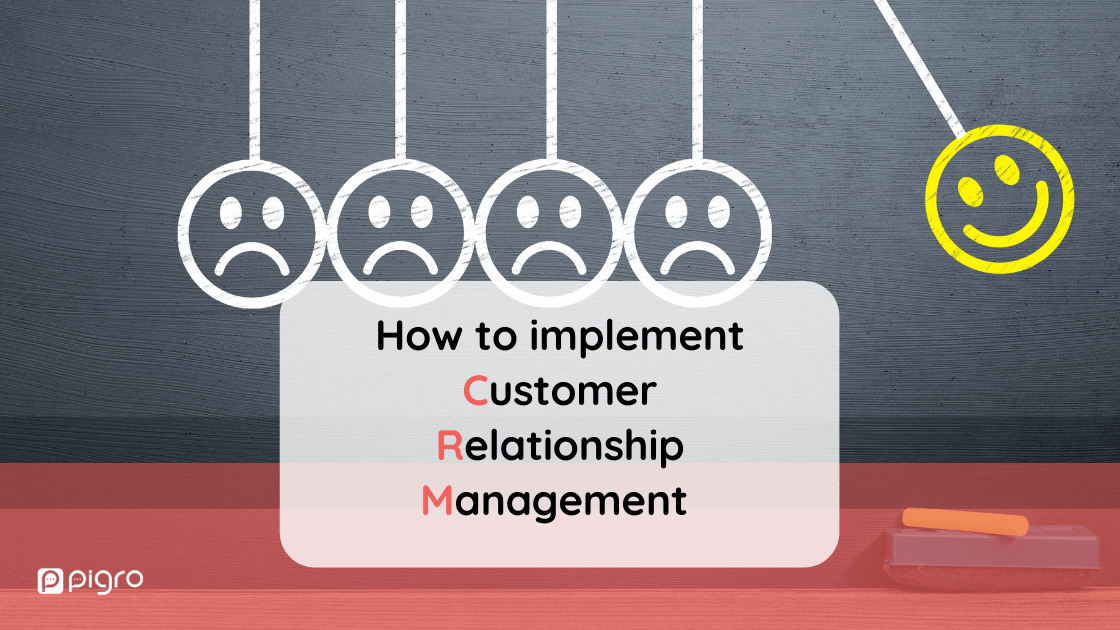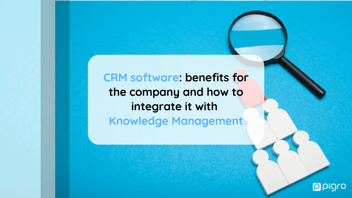CRM stands for Customer Relationship Management, which is the set of tools, strategies, and processes designed to establish and enhance relationships with a given company's customers in order to cultivate lasting interactions.
Customer Relationship Management: meaning and objectives
When people talk about CRM in a business environment, they often refer to a program or software that allows them to manage and track their customer base.
However, even before being a tool, Customer Relationship Management is a real business strategy for establishing lasting customer relationships. The goal of CRM is to build customer loyalty or acquire new customers.
Its importance within companies has grown especially in the last couple of years as a result of the Covid pandemic, which has shifted the sale of goods and services primarily online.
While many companies have equipped themselves with e-commerce to continue their business even during lockdown periods, systems to store information about customers and purchasing processes have also become increasingly important.
CRM, in fact, is mainly based on data analysis: everything about the customer, such as habits and needs, can be studied in order to improve Customer Satisfaction.
The primary means of tracking this information is through databases: purchase preferences, repeat orders, demographics, and contact information are examples of useful data to collect.

How to build CRM
As already mentioned, Customer Relationship Management is not just a tool, but a real strategy to be adopted in the company. The elements with which it is built are mainly three: strategy/culture, processes and technology (to which are added the communication and data analysis). Let’s see the main in detail.
-
Strategy and Culture: after defining goals, priorities, areas to be involved, and expected results, we must leverage the company culture, supported by management commitment. Therefore, when you adopt a CRM strategy, culture is the basis for building an efficient methodology.
All company departments must, in fact, be aligned according to the same vision, which in this case can be represented by Customer Centricity, which pays attention and care to the customer, and the Data Centric approach, which gathers information about their needs and developing products and services to meet those needs.
-
Processes: business processes represent the set of interrelated activities necessary for the company's functioning, and therefore the achievement of objectives. Processes can be defined as all the inputs that enable a given product or service to be provided to customers.
To implement a CRM strategy, it is necessary to determine all the business functions and processes to involve, in addition to the systems to integrate and the related roles: for example, you have to define where to look for new potential clients, who and how to relate to them, what information about the client to record, and where, and to whom to make it accessible and how, etc.
-
IT infrastructure: The technology, program that assists the organisation in managing all the data shared in databases. In addition to CRM software, you have to choose which systems to integrate, based on supported channels and touchpoints, and how to manage the data flow collected through this tool.
With Customer Relationship Management software, it will be possible to control all aspects of customer relationships, both in Sales and Marketing and Help Desk.
Types of Customer Relationship Management
After outlining the main components that contribute to the implementation of a CRM strategy, we can identify 4 macro-areas of Customer Relationship Management, based on the activities and methods of application of this strategy.
-
Operational CRM: aims to provide technology solutions and processes to automate and improve all customer-business contact activities. For example, it can make use of software that integrates marketing, sales, and service functions, which use the data and information collected at all these stages about a customer.
Access to this data is fundamental for Sales and Marketing departments, as it allows them to segment customers, manage promotional campaigns, automate sales processes and manage customer services such as after-sales and customer care;
-
Analytical CRM: is based on the storage, analysis, and processing of information collected by the operational CRM, relating to current and potential customers.
Data can also come from sources outside the company and can be collected in databases made available to various company departments to facilitate decision-making processes;
-
Collaborative CRM: leverages communication tools (phone, fax, email, etc.) to connect the different players involved in the supply chain.
Information about suppliers, distributors, customers, and partners is shared between departments and groups, or within the entire organisation, to foster collaboration;
-
Strategic CRM: it develops from a corporate culture that puts the customer at the centre of every process. The goal is to build customer loyalty by gathering information on specific needs to be able to propose new solutions to those needs.
It is important that this culture is spread throughout the company - from leadership style to brand identity - and that all resources allocated can increase customer value as much as possible.
5 benefits of CRM
CRM allows you to collect and analyze all customer data such as master data, source of acquisition, negotiation status, products and services adopted, active marketing campaigns, open or closed support tickets, etc.
For this reason, dedicating a CRM budget to the implementation of a Customer Relationship Management strategy represents an investment that brings significant benefits to the entire organization, both in the management and in the achievement of the objectives of each department.
Among these, we highlight five in particular:
-
making this information available to multiple business departments will speed up their work and increase business productivity;
-
it will also be possible to manage data in an advanced way, for example by focusing on potential and valuable clients, with ad hoc programs, in order to personalize the offer with "tailor-made" products and services enriched with added value;
-
sharing information helps improve collaboration across teams, such as the sales and marketing teams, including in managing follow-up and customer inquiries, driving Customer Retention;
-
thanks to the many data available, it is possible to make increasingly accurate sales forecasts, as well as to have an overview based on analysis and reports, which can also offer a complete overview to top management;
-
finally, CRM enables the successful identification and management of sales opportunities, decreasing the risks associated with the mismanagement of a client or the use of obsolete processes, with a consequent potential increase in sales and, therefore, profits and revenues.
Implementing a CRM Strategy can therefore represent a competitive advantage for the company: it is an important tool for connecting departments and divisions that often work separately and risk dispersing valuable information.
Leveraging Customer Relationship Management systems allow you to stimulate innovation, bringing benefits to all company levels.
Customer Relationship Management 2022 Insights
More and more customer interactions are built with Artificial Intelligence, such as social media conversations, IoT products, and Augmented and Virtual reality, and capture insights through AI-driven CRM systems.
The goal for the business is to leverage the wealth of information about clients to build improved customer-engagement interactions, thanks to targeted and intent-based offers.
According to the "State of CRM report” from Columbus Global, the importance of advanced capabilities, such as AI and automation, has jumped from 33% in 2019 to 42% in 2021.
This is also due to the challenges companies face as a result of the pandemic. In fact, 57% of executives were unable to maintain customer experience and engagement levels during the shift to remote work, because their CRM systems were not well-integrated and accessible.
Companies should be extending cross-team adoption of CRM to utilise its full capabilities: when all teams use CRM, they are 16% more likely to feel it supports the full customer lifecycle. This is because improving data availability allows better data-driven decision-making.
Access to data, however, is often fragmented and siloed, making teams struggle to use relevant information to engage with customers at speed, thus impacting CX.
“70% of employees say that customer/prospect data comes from too many sources to easily make sense of it”, while 94% of employees believe that implementing their CRM systems as a single source of truth would create value for their organisation.
In addition to that, the onset of the pandemic has also accelerated data decay. According to the report “The State of CRM Data Management in 2022” by Validity, since the outbreak, the majority of the respondents finds out that CRM hosts data with inaccurate locations, names, or titles.
To respond to this, 76% of respondents say their company is taking data quality needs more seriously.
With this, we understand the importance of tools that automate the analysis of the quality of information and data in the company's knowledge bases. Such as Knowledge Insights by Pigro which, with its AI, provides actionable insights about the effectiveness of business content.
Learn more: How to implement CRM in the company with knowledge management
Do you want to know more? Start measuring the quality of your knowledge base and learn how to improve!
Fill in the form to know how to connect your repository and contact a Pigro expert.



